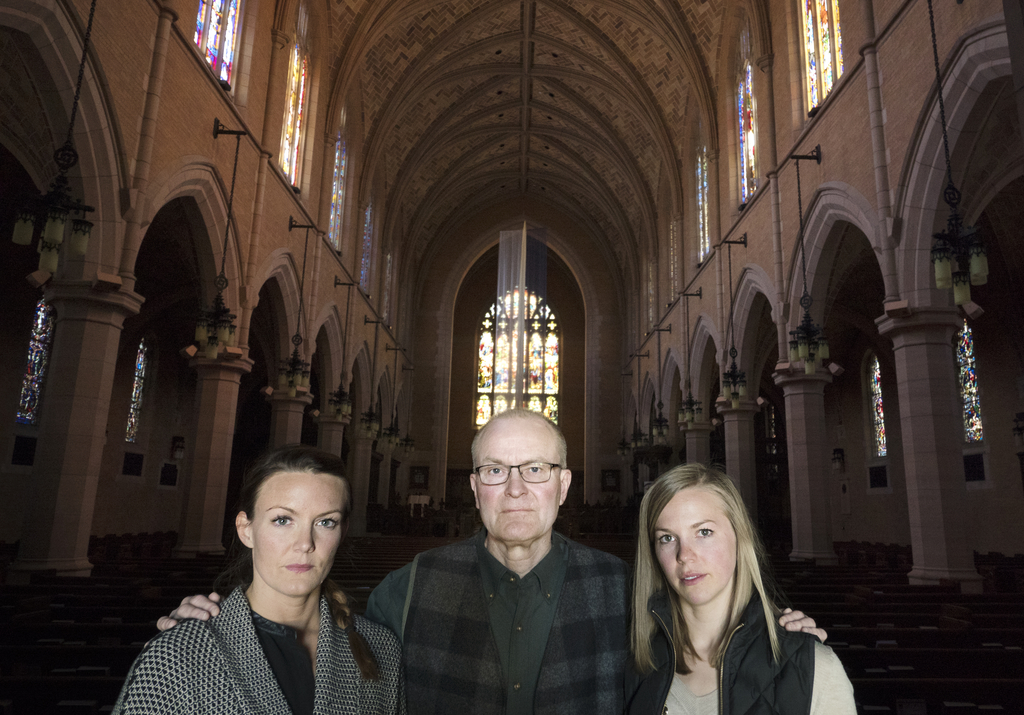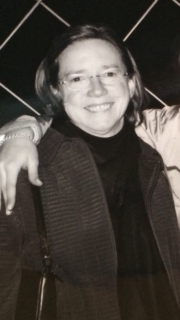
There’s been a big, heavy box of papers under my desk for the past two years. Inside is a story about opioids and the chaos of the American medical system.
The papers are private medical records given to me by the family of Peggy Larson. She died at the age of 62, just three days after Christmas 2015.
There’s no order to them. Some aren’t dated; many are illegible. Together, though, they form a grim narrative of the last 10 years of her life and her addiction.
The Twin Cities woman bounced from doctors to emergency rooms to pharmacies in search of opioid painkillers. After she died, her two daughters found enough pill bottles in her Minneapolis apartment to fill a grocery bag.
- MPR News: Minnesota’s opioid epidemic
“My mom was crazy, crazy smart,” said Peggy’s daughter Andrea. “When she became addicted to opiates, she used those smarts to take advantage of the system. And the system is set up in such a way that it can be taken advantage of.”

I wrote a draft of Peggy’s story two years ago, focusing on weakness in the state’s prescription monitoring program. But some reforms of the program went through, and the systematic part of the story lost its immediacy.
The draft never got edited, and I was waylaid by other projects. The story never ran.
But Peggy and her family’s story stuck to me. An unfinished story gives a reporter the same feeling you get when you can’t remember if you left a stove on. The nagging box of medical records under my desk were an anxious, almost-constant reminder.
Part of it is that I know the family paid a price for talking to me. Reliving and retelling Peggy’s addiction rekindled their trauma. But they’d heard a series I did on the opioid epidemic just months after her death, and it had helped them. They wanted to help others.
“It sucks. I don’t want to be doing this thing. You are a very nice person, but I’d rather never have met you, to be honest,” Andrea told me two years ago. “This is a publicly rare example of someone who fell through the cracks in the system, that I feel obligated to share because I hope that it changes something.”
‘Smarter than the box’
The records I’ve been holding onto offer a glimpse into how the medical system failed Peggy and her family.
They show doctors and nurses asking Peggy over and over again to rate her pain on a scale of one to 10. Her answers escalate over time. The doctors treat her — often prescribing her painkillers — and then they move on. There are too many doctors to track.
Peggy’s family lived this. I talked to them in a plush library at Saint Mark’s Episcopal Cathedral in Minneapolis, where Peggy had once been an active member.
David Larson, Peggy’s husband for three decades, told me her problem with medical opioids stretched back 15 years, to when he caught her stealing Percocet from her youngest daughter. After that, it seemed like she was always seeking more painkillers from doctors for a variety of ailments, or apparent ailments.
“Over the years, as questions became drilled down — both from her family and the medical community, sisters, parents — she became more secretive, more clever,” David said. “She was smarter than the box.”
David has a lifetime of stories about how Peggy got around systems that are supposed to prevent what’s called ‘doctor shopping,’ convincing dentists, doctors or other prescribers that they should legally dispense narcotics.
David was with Peggy during appointments documented in her medical records, where doctors she had never seen before ripped up current prescriptions and wrote all new ones. He brought her to the emergency room when she overdosed. And he brought her to the hospital at all hours for her many and varied ailments.
“She’d been brought in for back pain, given a morphine pump, every time they asked her, ‘What’s your pain level, 1 to 10?’ She answered automatically, ‘10,’ and they’d just up the morphine,” David said. “I had a doctor tell me, ‘I’ve never seen someone take that much morphine and keep her eyes open.’”
- Oct. 5: Who pays for opioid epidemic?
The documents in Peggy’s medical records tell part of this story, but leave blank the impact painkillers and alcohol were having on the people around her.
David tried, but couldn’t deal any more. His own futile anger was too much. The couple separated.
Peggy’s daughters became her main support. Her daughter Andrea told me the drugs doctors prescribed would cause Peggy to nod out at the dinner table or get so confused that she got lost in the mall.
“There’s this point…where you sort of go, ‘Is this really happening? This can’t be happening,” Andrea said. “‘Is this actually a problem? But doctors are prescribing it.’”
‘Right thing to do for an addict?’
Andrea remembers a time she visited her mother at a hospital and saw how easy it was for her to get the drugs she wanted. Andrea knew her mom was already highly medicated, but Peggy told a nurse that she was still in pain. The nurse said she’d boost Peggy’s morphine.
“I blurted out, ‘Is that the right thing to do for an addict?’” Andrea said. “The room kind of stopped. The nurse just looked at me. My mom’s parents had just passed away, she’d moved out of her house, and [the nurse] said, ‘Your mom has had a really hard time,’ and just walked out of the room.”
Peggy’s family told me she was persistent. But she was also a white, middle-class, highly-educated woman.
“I think people were profiling and thought, ‘She can’t be an addict,’” Andrea said. “I highly doubt had she been poor or had she not been white that she would have been able to do this.”
Even when one prescriber caught on, there were always more doctors. Peggy’s family found a note after she died from a doctor who told her she was taking too many opioids. The doctor assured her that he’d fill one final prescription.
The family admits that most doctors probably had the best intentions. Looking through the pages of medical records, I can’t disagree. Most of the diagnoses and prescriptions seem benign on their own, but together, the family says, their damage added up.
“Doctors, as I sit here, are giving a fourth, fifth, sixth prescription to somebody that’s been on it for ten years, and never blinking an eye,” David said. “If she was approached she’d say, ‘I’ve done nothing wrong. Everything I’ve done has been under doctors’ orders.’ How to dispute that?”
About 50,000 Americans now die each year of opioid overdoses. Although headlines, including some attached to stories I write, blare about heroin and fentanyl, half of those dying of opioid overdoses in Minnesota are still killed by prescription painkillers. More than 3 million opioid prescriptions were prescribed in the state last year.
Big numbers and terms like ‘epidemic’ emphasize the seriousness of the issue. But they can obscure the people whose lives have changed or ended, and the loved ones they left behind.
All broken
Peggy was a valedictorian at the University of Minnesota, a leader in her churches and a successful educator. She sang in her church choirs and was a statewide piano champ.
Her obituary in the Star Tribune on Jan. 3, 2016, included the following passage:
As a mother, sister, daughter, friend and spouse, Peggy was most interested in ensuring that those around her felt loved and cared for.
Ultimately, this desire to care for others at the expense of caring for herself resulted in her passing, after struggling with addiction.
We share this in an effort to reduce the stigma around mental health. Peggy was a lovely, witty and complex person who left her mark on many.
In the months after Peggy’s death, David said he learned more about opioids than in 15 years of living with a woman addicted to opioids.
“Peggy had a disease,” David said. “I don’t hold Peggy responsible, because if she had cancer she’s not responsible. What I do have anger for, and probably will never get rid of all of it, is somehow we lost our way.”
- April 2016: Minnesota’s opioid overdose crisis, explained
David is not hopeful that doctors, drug companies, medical boards and politicians will take responsibility for making changes that can actually save the lives of people like Peggy.
It’s all broken, he tells me.
“My views are different because of my role, because of my love affair with a beautiful woman that I still love today,” David said. “Who’s to blame? There is no blame — it’s the system.”
Peggy’s family entrusted me with her story. But the scribbled notes in those heavy boxes of medical records, those burdens of memory and grief, are ultimately shouldered by the people who love Peggy.
On Friday afternoon, I put the box and another overflowing pile of medical records into the trunk of my car, and drove them over to Peggy’s daughter’s house. I set the boxes on the floor of the dark garage, next to a baby stroller, then pulled the garage door shut again.
Related: ‘Her addiction stalked her and stole her once again’ (NewsCut)
From the archive: A father’s story: How a ‘really good kid’ died of a heroin overdose (NewsCut)
